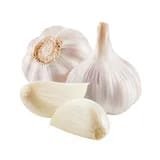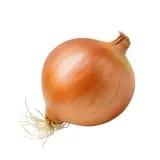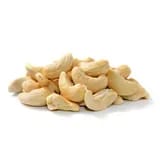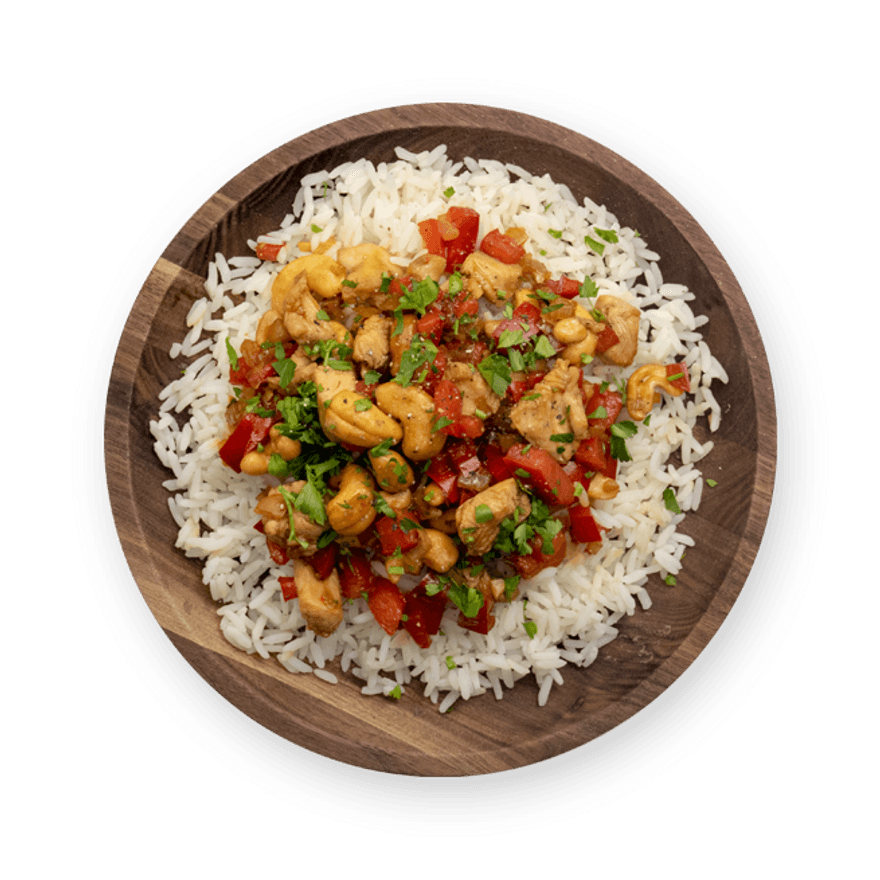Ingredients
Make sure you have...
Utensils
Stovetop, Pot (small), Frying pan
recipe


Step 1
Prepare the marinade by mixing the soy sauce and powdered sugar in a container.

Step 2
(Optional: add a minced garlic clove per person and a little flour if you want a thicker sauce).

Step 3
Cut the chicken into cubes and add it to the marinade, set aside.

Step 4
In a pot of salted water, cook the rice according to pack instructions. Strain and set to one side for later.

Step 5
Chop the onion and pepper.

Step 6
Chop the pepper.


Step 7
Add olive (or peanut) oil to a frying pan and cook the onion and peppers for 5 minutes.
Step 8
Add the chicken with its marinade and cook for 5 minutes.

Step 9
Add the cashew nuts and fry for 3 minutes.
Step 10
Serve the rice with the chicken.
Personal notes
Add your own flavor!
Nutrition facts
Average estimated amount for one serving
| Energy | 745 cal. |
| Fat | 24 g |
| Carbohydrates | 80 g |
| Protein | 48 g |
| Fiber | 6 g |
Values are based on an average estimate for one serving. All nutrition information presented on Jow is intended for informational purposes only. If you have any concerns or questions about your health, please consult with a health-care professional.
On average, one serving of the recipe "Imperial chicken" contains 745 Energy, 24 g of Fat, 80 g of Carbohydrates, 48 g of Protein, 6 g of Fiber.
Price per portion
| € | Nos recettes à -2 € par portion |
| €€ | Nos recettes entre 2 € et 4 € par portion |
| €€€ | Nos recettes à +4 € par portion |
Please note, the price above is dependent on your grocer and the available products in the grocery store you chose.
Scores


C Nutri-score
The Nutri-score is an indicator intended for understanding nutritional information. Recipes or products are classified from A to E according to their food composition to promote (fiber, proteins, fruits, vegetables, legumes, etc.) and foods to limit (energy, saturated fatty acids, sugars, salt, etc.).
B Green-score
The Green-score is an indicator representing the environmental impact of food products. The recipes or products are classified from A+ to F. It takes into account several factors on the pollution of air, water, oceans, soil, as well as the impacts on the biosphere. These impacts are studied throughout the product life cycle.
Retrieving reviews...



